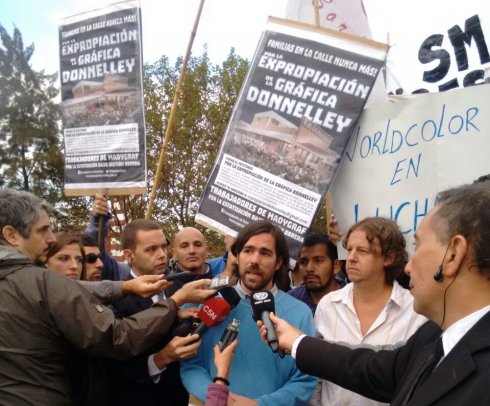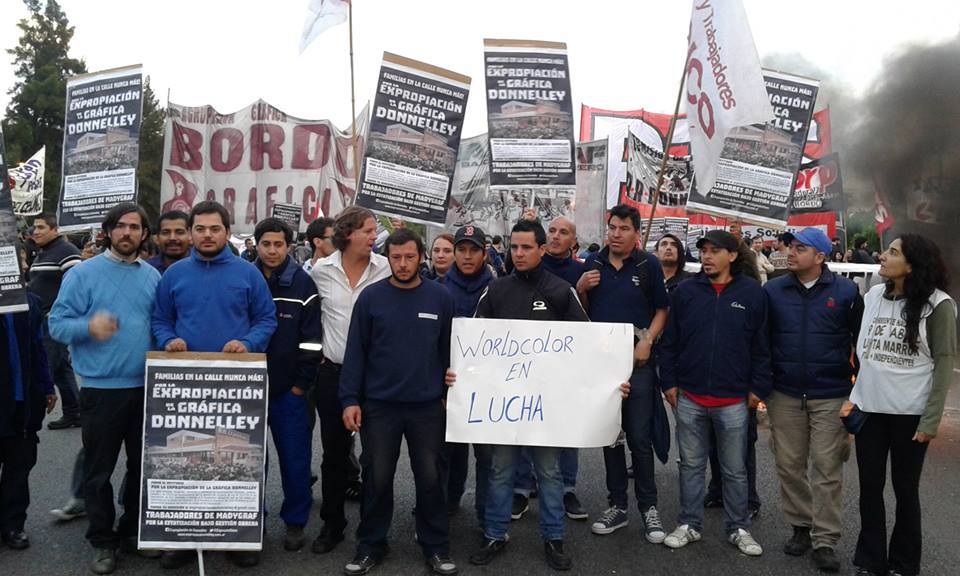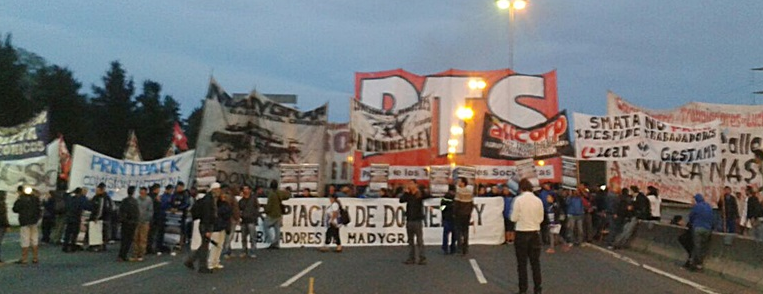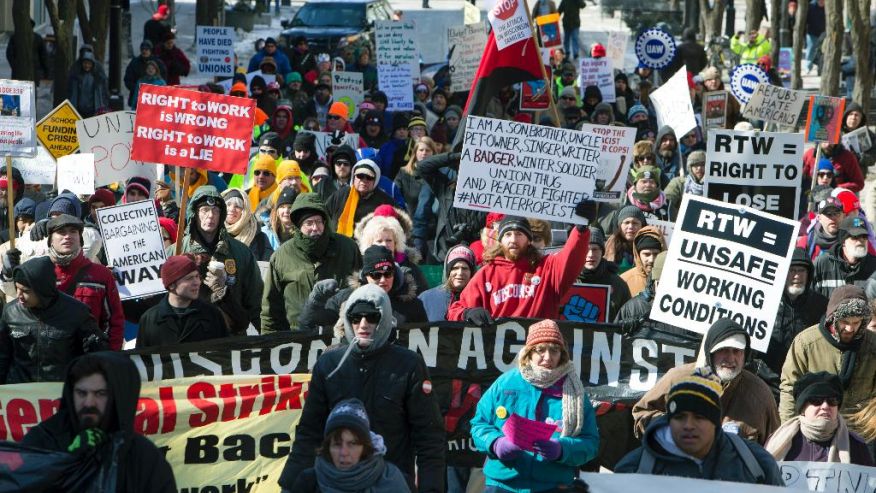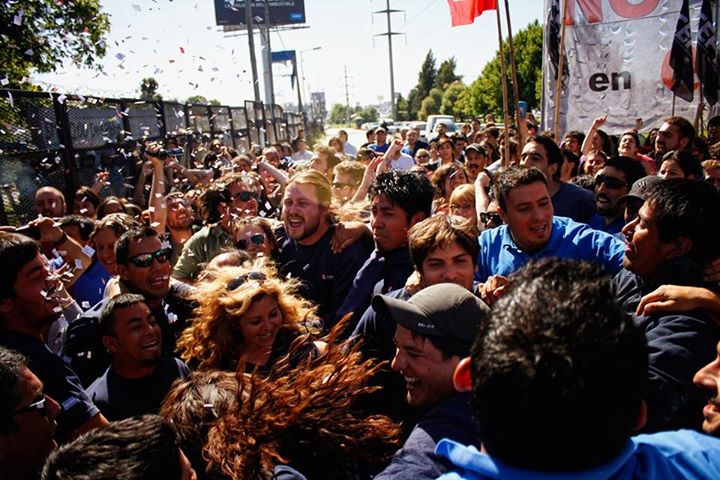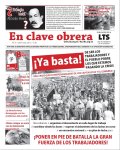Business in the Bolivarian Venezuela
Chavez’s “nationalization”
07/06/2009 LVO N° 327
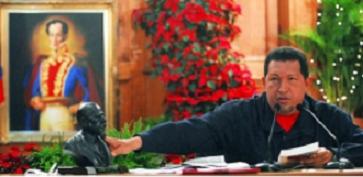
“We’re demanding the nationalization of the coal briquette sector, the nationalization of Matesi, the nationalization of Comsigua, the nationalization of Orinoco, the nationalization of Venprecar and the Tavsa Company,” the Venezuelan president, Hugo Chavez, declared on national television on May 21st. He also ordered the nationalization of Carabobo Ceramics from Ciudad Guayana - producers of prefabricated bricks for industries. As was expected, the local industrial sector as well as the Argentine industries protested against Chavez’s supposed “attack against private property,” while workers from some companies that were affected- whom had been in struggle for months - saw it as a triumph. It’s through these measures that Chavez has expanded his control of all the chains of production in the country’s steel and iron railway industry, but at the same time he is trying to disband the worker’s conflict and the union crisis that has existed in the region for months.
Buying “National Sovereignty”
Though they are medium sized companies and don’t account for a great number of workers like Sidor, the more than 700 workers at Orinoco Iron, 205 at Cormsigua (Guayana Complex Metalwork), 130 at Matesi (Metalwork Materials), 364 at Tavasa (Venezuelan Steel Tubes), 232 at Venereal (Prereduced Caroni Venezuela), and 200 at Carabobo Ceramics form the, nearly 2,000, workers who will be on the Governments payroll. Furthermore, many of these companies are controlled by foreign investors: Matesi is controlled by Terbium (Techint Group), who owns 50.2% of the shares, and by Sidor, who owns 49.2%; Techint owns 70% of the Tavsa shares, while CVG owns 30% (TAVSA owns 70% of Techint shares and 30% of CVG); Comsigua is in the hands of the Japanese company Kobe Steel, who own approximately 60% and the rest is split up between Techint, FMO and Marubeni; Orinoco Iron and Venprecar, divisions of Sivensa (with shares from Australian-British group BHP Billiton and local investors), and Carabobo Ceramics are owned by the “local companies:” Cisneros Group and Banco Mercantil.
These are just more examples of Chavez’s policy, like those demonstrated months ago: purchasing the Cargill food production plants, the handing over of 76 midsize petroleum service companies to the PDVSA, and the recent announcement to purchase the Bank of Venezuela. Chavez quickly clarified that all of the companies will be rightfully compensated, just like the transnational companies (associates with 40%) in the Orinoco belt, the market price purchase of Canty (telecommunications), Elencar (electricity), and transnational cement companies, Holcim and Lagarde as well as the recent purchase of Sidor for 1,970 million dollars.
As we’ve been saying, Chavez does nothing more than directly buy, what he calls, a “national sovereignty”, which entails repositioning himself in key sectors of the national economy and paying millions of dollars to the international companies (how much do they cost?). However, these companies should really be expropriated without any compensation. When the crisis started to affect the country, the government began to cut the budget, increased the sales tax and the basic goods, but decided to pay the transnational companies. This payment does nothing more than increase the budgetary drain that’s why the companies should be expropriated without any compensation and be put under direct worker control. The government’s adjustments have decreased the standard of living and increased unemployment; these companies should be expropriated and used to help meet the basic needs of the people.
Pressuring to loosen up the wallet
As it was expected, all of the business owner’s associations and the rightwing opposition protested. The Argentine Techint Group, along with the Argentine business associations like the Industiral Union (UIA), The Argentine Business Association (AEA), the Exportation and Commercial Association as well as private Argentine and foreign bank entities are demanding that Argentine president, Christina Fernandez, intervene to defend their interests. However, on the contrary the Spanish business owners appeared to be satisfied with the deal made for the Bank of Venezuela, and according to Chavez: “ Today we signed the agreement under the best terms and without conflicts. I want it known that the Spanish government’s attitude was without any provocations, despite what the Spanish and Venezuelan press had stated.” (AFP 5/22). What the big Argentine companies are really looking for is a good compensation, the two biggest Argentine share holders Tavsa and Matesi are practically paralyzed (see ahead).
This is why, during the VII Trimesteral Meeting between Venezuela and Brazil, Chavez gave all his support to the Argentine president given the controversy created by his declaration. Chavez indicated that “the Argentine companies in Venezuela should be thankful that they have Cristina as a president, because thanks to her mediation they managed to negotiate the agreements that were made” (Radio YKVE
Mundial, 26/5). Cristina thanked Chavez and responded that, “ it was precisely the intervention of this president that managed to obtain the beautiful sum of 1, 970 million dollars for the 60% of the expropriated shares the ” (El Universal 5/26). Moreover, with the Argentine president’s intervention Chavez’s government took care of the severance pay that the transnational companies owed the workers.
As usual, Chavez topped it off with “it’s about a socialism that doesn’t refute private investment, within the harmony of private and public property, state and communal..This is how we will reach equality, equity and liberty.” (Radio YKVE Mundial, 26/5).
Pyrrhic Businesses
In a recent article published in the Lucha de Clases Magazine. We said that after the February 15th triumph and the December 2nd referendum defeat in 2007, Chavez regained a kind of temporary support, showing his capability to rebuild his image temporarily. Chavez’s government took advantage of this situation in two different levels, on the one hand to regain control over the masses and the worker’s movement and on the other hand to be able to put forward his policy by pushing another group of companies, which are crucial for the development of other strategic industries, under the State’s control. We must point out that Chavez managed to recover his popularity, which is demonstrated by the fact that he held 60% of public support on the surveys, but also because the opposition has back down - at least momentarily- after the December 2nd referendum.
After February, the government further advanced the “nationalization” of petroleum companies, banks, and basic industries. However, it’s interesting that they are going back to their plan to control strategic sectors during a time of economic down turn, increasing inflation and decrease in petroleum income. For many analysts, recuperating these sectors requires public investment, but the government’s financial muscle is currently weak: it has fewer resources and more commitments, and the fall in petroleum prices is decreasing national income. The average price of Venezuelan petroleum has registered at a 51% decrease since 2008, and the income from petroleum exportations has fallen 55% in the first trimester. According to data from Central Bank, the petroleum activity registered a 4.8% fall in the GDP during the first trimester, due to the low volume of production and export income, which totaled 9.8 million dollars (down from 20.4 million in 2008). This fall includes the small increase of 0.3% in GDP during first trimester in 2009.
The government has as many cash problems in the petroleum sector as in other sectors, and as many debts with contractors as their suppliers, which also generates worker conflict within these companies who would argue about the State’s debt to get out of their obligations. Some analysts explain that apart from controlling strategic sectors, “the government accelerates the nationalizations because it has debts with the suppliers and they opt for taking over the companies before paying the outstanding debts or handing over subsidies. This way the government has control.” (Luis Vicente León, Datanálisis, 5/25). Take the example of Tavsa, a company, that’s inside Sidor. Tavsa is almost the “only” client who acquired 95% of the production. The state petroleum company owes Tavsa 50 million dollars, and at the same time Tavsa owes SIDOR around 12 million dollars. As a form of pressure, Tavsa, is putting off its labor obligations, which brought the workers to struggle and paralyze activities.
Although speculation over the Chavez administrations real intentions in pressuring these companies, most importantly the decrease in income due to the drop in the price in petroleum; the reality is that in the midst of an economic crisis Chavez “takes responsibility” of companies that will need a considerable amount of investment to reactivate them. Furthermore, the transnational companies take advantage of the economic world crisis to sell at the highest price they can. Like Pyrrhus during the war, Chavez declares victory but at the cost of a lot of blood and uncertainty in the economic horizon, when he could have directly confiscated the profits.
The workers struggles conflict with Chavez’s measures
We published an article in the LVO N° 325 about the urgency of a new workers’ movement, the objective reconstruction and the struggles that they had been fighting for. We also wrote about Chavez’s tactics in confronting the new wave of strikes; he is looking to discipline the radical workers’ struggles and even threatening the workers who work for State owned companies. These methods of persuasion and threats have sparked yet another movement demonstrating the course of struggle, most importantly in the countries large Mining, metal and rail workers concentrations. Three struggles would likely turn into a time bomb, all of them recently put under state control: Mates, Carabobo ceramics and Tavsa.
When Chavez announced his latest measures, the Matesi workers had already been in struggle for 6 months, and during all that time they weren’t paid because the Techint group had decided to take a hard line. Techint had also decided to eliminate two of the three shifts, with the intentions of letting go of a large number of workers. The workers decided to resist and go on strike. The company justified the situation by blaming the world crisis, but the workers knew that they had other interests and they were right: Techint taking advantage of the situation forced State intervention and made the “nationalization” feasible, considering the Sidor negotiation a good deal. The workers were already demanding that the government study the expropriation of the transnational company that was attacking their rights. “We can’t be the ones who are sacrificed for the capitalist failure; in any case they should reduce the managers’ wages,” declared the workers. The situation in Tavsa wasn’t any different, although the company hasn’t been producing for the last three months, in a kind of lock-out, with the excuse that because of the 50 billion dollar state debt the company could no longer operate. They have completely abandoned the workers, who suffered layoffs (like the 120 contracted workers laid-off on May 1st!!) However, the workers continue to struggle and demand that they nationalize the factory, like Sidor.
Carabobo Ceramics has been worker occupied for the past six months. In October 2008 the company owners ordered the workers to turn off the ovens that are used to make refractory brick and they informed the workers that the factory would be closed, claiming that it was due to financial reasons. The workers refused to shut down the factory and they left the machines running on low, declaring the beginning of the conflict. The bosses looked to reopen the factory with a different name, so that they could get out of their obligations to the workers as well as reduce the work force. The workers realized what was happening and immediately took over the factory, demanding the nationalization of the plant. Just before Chavez took action, together the workers in Orinoco Irons and Venprecar announced their plan of struggle demanding economic, social and labor rights from both companies; the workers threatened to go on strike if there demands were not met.
The government, in hopes of breaking up the workers struggle already in course, paid substantial compensations to the big national and foreign companies; but when these companies changed over into the Government’s hands, the problems continued with precarious work as well as outsourcing; this is the current situation in Sidor and the petroleum companies. Meanwhile pressing problems remain unsolved, like housing, increase in the price of living and decrease in the salary value due to inflation. Chavez compensates the big transnational companies through his boastful politics of “national sovereignty.” This is why in facing this situation, it’s necessary to take up the flag of struggle:
– Not one more cent for the transnational or local economic leaches!
– No compensations for the nationalized companies!
– Expropriations without compensation for all of the companies that layoff workers or threaten to shut down and that those companies be controlled directly by the workers!
How much does Chavez’s “national sovereignty” cost?
4,143 million dollars for the “nationalizations” of Sidor, Holcim and Lafarge and the Bank of Venezuela (whose owners also are leaving with 304 million in past earnings.) This sum is equivalent to 42% of the country’s export income in the first trimester of 2009.
We must also note the short term payment due for the purchase of Carabobo Ceramics, the 76 petroleum service companies, the Cargill plant and the 6 companies in Guayana.
Furthermore they already paid 1,300 million dollars for 86% of the shares in CANTV (the biggest telecommunications company) and 740 million dollars for 82% of the shares in Caracas Electricity.

